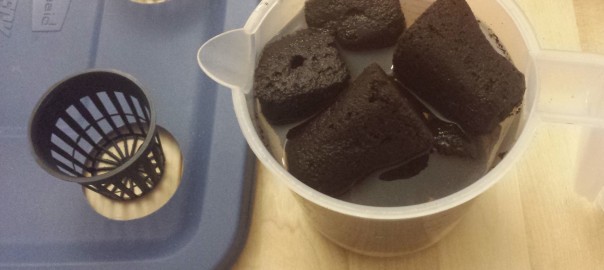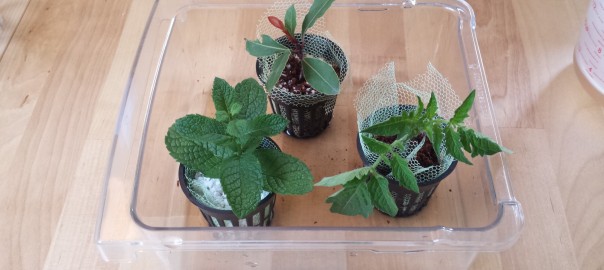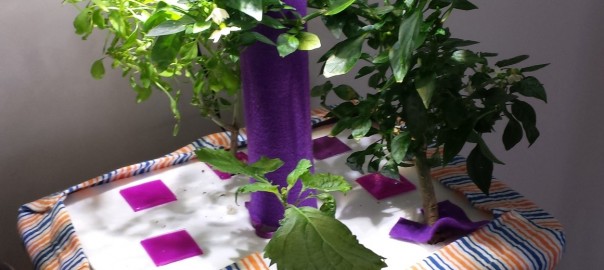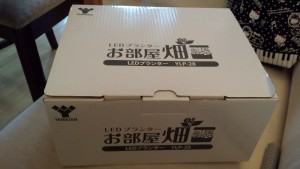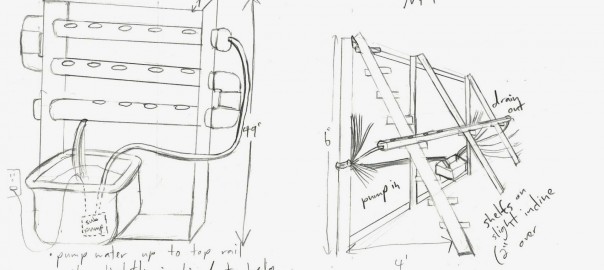Materials
Things in the kit:
- An 11L storage tote container with holes cut for net cups. We didn’t talk about this specifically during the workshop but if you look at the bottom of the container you’ll see that it’s LDPE, one of the plastic types that is safe for hydroponics in my opinion.
- 100mL each of Optimum Hydroponix Grow A and Grow B. It’s not a case of using one for grow and one for bloom, it’s a grow formula that just comes in two parts. See the article about nutrients if you want to learn about bloom formulas.
- A liquid-based pH test kit, including testing liquid, vial, and colour chart for reading results.
- 8 net cups. This is more than the system holds, but the extras are so you can start germinating new plants as you’re preparing to ‘retire’ some older ones.
- 8 media cubes (rockwool or Rapid Rooters). The small rockwool cubes are a good size on their own but Rapid Rooters are a little small. If using Rapid Rooters, pad their sides with slices cut from an extra cube in order to make a snug fit. For another media option, you can use larger loose media such as large perlite or coco coir or smaller sized hydroton, or see my post on cloning to see how plastic mesh netting can be used together with smaller grain perlite or coco coir.
Continue reading Hydroponics workshop: Starting the Kratky system
